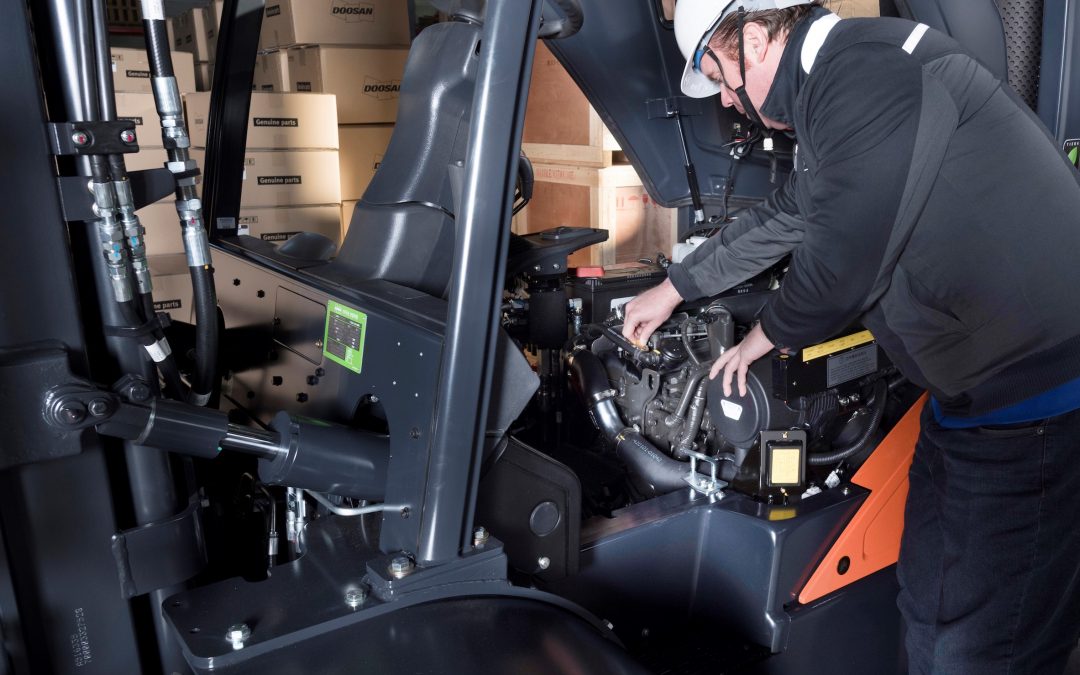Forklifts make many jobs easier and are a staple in many industries. Routine maintenance and planned servicing schedules ensure they’ll run problem-free for years.
It might be tempting to skip planned inspections and forklift servicing to save on downtime and costs, but it is essential to keep all materials handling equipment in good working order and avoid pricey repair bills in the future.
Forklift maintenance and servicing is not a one-off event each year. Instead, preventative maintenance and routine checks should be planned as part of an annual programme with defined frequencies and tasks to be completed. Different types of forklifts also require different types of maintenance and the frequency/intensity of use should also be factored in.
Forklift truck preventative and ‘as required’ maintenance
Preventative maintenance is the key to ensuring forklift trucks continue to operate at peak performance. It means performing inspections and carrying out servicing even if the truck is not demonstrating any faults.
Preventative maintenance minimises the likelihood of downtime from forklifts developing a fault that could have been avoided. It means scheduling daily, weekly, monthly and other servicing jobs and sticking to the planned frequency.
Ensuring a forklift receives maintenance whenever a problem is identified is also crucial. Performing repairs and fixing issues as they arise prevents them from getting worse and likely becoming more costly as time goes by.
Daily forklift checks, cleaning and maintenance
Safety is paramount with any item of machinery, including forklift trucks. Before every shift of operation, a checklist should be completed that includes an examination of key components and ensuring everything is in safe working order. This will also need to include cleaning tasks.
Forklifts often operate in dirty environments. Even if they don’t, they’ll still pick up dust and dirt and be subject to the elements if they are used outdoors.
A typical daily inspection should include the following, with items checked off by the responsible operator to provide assurance and an audit trail:
- Tyres to ensure they’re properly inflated and free from excessive wear or damage
- A test of the horn, lights and indicators
- A test of the brakes and alarms
- An inspection of all safety mechanisms
- A check of fluid levels including oil, brake fluid, hydraulic fluid and coolant
- Confirmation that sufficient fuel is in the tank to match refuelling intervals
- An examination of the forks and a test of the lifting mechanism
Forklifts should also be cleaned at regular intervals inside and out. Confirmation that the truck is clean should be included in checklists, plus confirmation. Drivers and other staff should also confirm that the operating area is free from hazards and obstructions and that the forklift can be used safely in the environment it will be working in.
Forklift servicing intervals and annual inspections
In addition to inspections and maintenance, you should schedule regular servicing by a qualified professional. This will usually be in accordance with the manufacturer’s recommendations. Depending on the usage of the forklift, servicing will normally be planned at three month, six month and annual intervals.
Regardless, you should have the truck undergo an extensive service on an annual basis or when it has performed 2,000 hours of operation – whichever comes first. This will include a complete inspection and repair of any component used in the lifting mechanism and the propulsion system.
As repair costs for extensive problems with a forklift or damage to it are often as high as the cost to replace it, a planned preventative and reactive maintenance and servicing schedule is imperative. If you need any assistance with this, always consult an expert.


